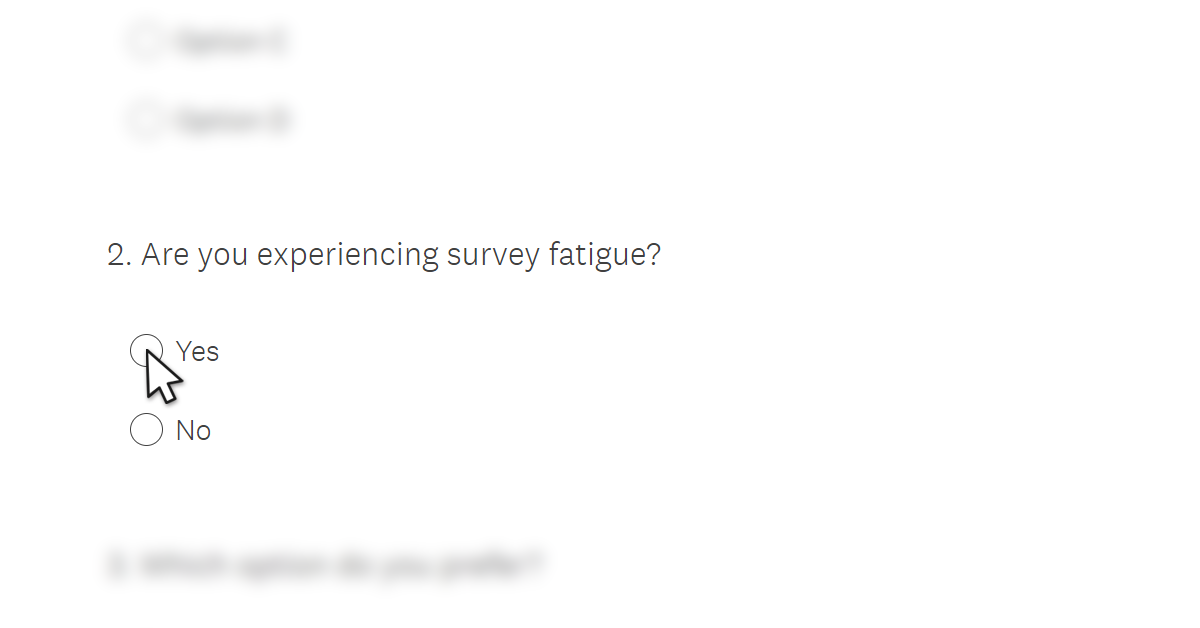
Today’s Morning Buzz is by Warren Kagarise, digital engagement manager for King County, WA. Connect on LinkedIn, Twitter and Instagram.
What I’m Reading: Twilight of the NIMBY, a look at how neighborhood activism is evolving under the pressures of affordability, homelessness, and generational change.
What I’m Watching: “For All Mankind” — a thought experiment about what might have been if the Soviet Union beat the United States to the moon and the Space Race continued long after the Apollo program.
Even the most enthusiastic public servant occasionally succumbs to a rote, paint-by-numbers approach to community engagement, whether due to political pressure, murky goals, or a lack of resources and time.
Enter the stakeholder survey.
The survey is a time-honored tradition at public agencies, but if we expect surveys and similar engagement tools to stay relevant, we need to adapt.
Often, the result of half-hearted outreach is survey fatigue or, more broadly, engagement fatigue. The weariness results from many factors: too many questions, redundant questions, and perhaps most off-putting, disingenuous questions. Or, cynically, surveys function as a fig leaf to cover a predetermined outcome.
Agencies face many competing priorities for community members’ attention, perhaps more so now than in recent memory.
The pandemic reshuffled priorities for both government entities and constituents. Completing a survey about sidewalk improvements or new playground equipment can feel minor at a time when inflation, affordability, and public safety top Americans’ list of concerns. (Yes, I see the irony in referencing a survey to change perceptions around surveys.)
The most recent information about Americans’ views toward the federal government is not a perfect analog for views toward local government, but the apples-to-oranges comparison provides context about views of government in general. Many respondents shared concerns about the federal government’s responsiveness and stewardship of taxpayer dollars.
Lately I find national surveys more useful than in the past, due to the increasing nationalization of politics in local government.
For many of us in government communications and public outreach, such news is difficult to swallow. We genuinely want to hear from community members to improve the work of our agencies. And we make our livelihood by facilitating interactions between government and community.
The current community engagement model needed to change long before the pandemic and ensuing societal shifts.
A decade ago, as government agencies started to embrace social media in a meaningful way, many of us believed the adoption of new platforms and tools could help eliminate many longstanding barriers to public engagement. Now we have a clearer view on social media’s benefits and limits.
As a result, we not only need to be more creative in how we conduct community outreach, but also more honest with residents about what we can hope to achieve.
No secret sauce exists for successful community engagement. Every community is unique, with distinct populations, characteristics, and history to consider.
Determine what you need from the engagement opportunity and the level of involvement for community members. A good place to start is the International Association for Public Participation’s Spectrum of Public Participation.
With surveys, consider a few key tenets to improve the experience for respondents:
- Use plain language and provide accessible and translated versions.
- Share clear, easy-to-follow instructions.
- Promote the survey to a broad audience.
- Tell respondents how long the survey takes to complete.
- Provide context about why you chose which questions to ask.
- Offer different formats or events for residents to share feedback.
- Be clear about what happens to the information respondents share.
- Once the survey ends, close the loop with respondents — even if the result is not flattering to the agency or does not reflect the survey responses.
Depending on what your budget and regulations allow, consider offering incentives for residents to participate in surveys and other engagement opportunities.
Other steps require greater nuance.
We must work with leaders to set more realistic expectations for surveys and other engagement opportunities, in terms of what is reasonable for the community and realistic for the agency.
Communicators also need to be empowered by leadership, both appointed and elected, to speak honestly about why engagement efforts fail. As CivicPlus’ Jennifer Elliott wrote, if you’re only focused on resident engagement, you’re not doing enough for your residents.
We cannot talk about survey or engagement fatigue without considering another problem: inaction fatigue. What if the issue is not offering too many opportunities to weigh in but instead a failure to deliver?
We often think of engagement fatigue — and accompanying inaction fatigue — in the context of employees, rather than residents. (Vince Vu’s series about diversity, equity, and belonging in government focused on the employee aspect.)
In our never-ending news cycle, understanding survey fatigue in a community context is vital for public agencies seeking to involve residents in decision-making.
As public servants, and especially as communicators, we want to show buy-in from the community we serve. Staying relevant means respecting residents’ time and input — and communicating clearly about what we can and cannot do together.
